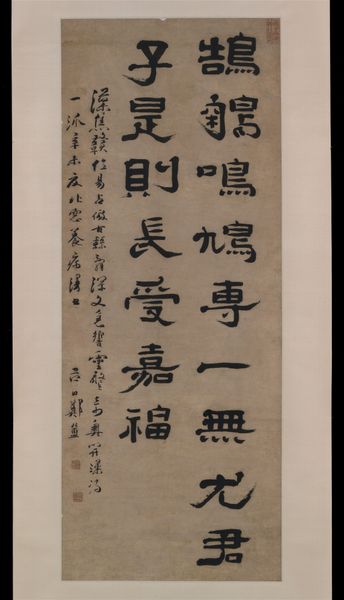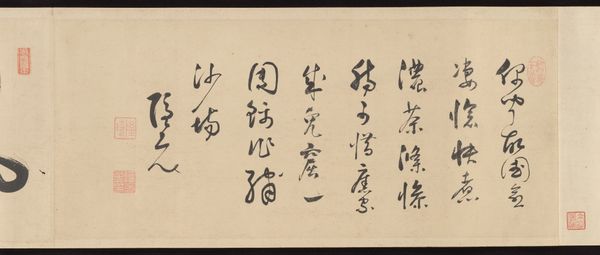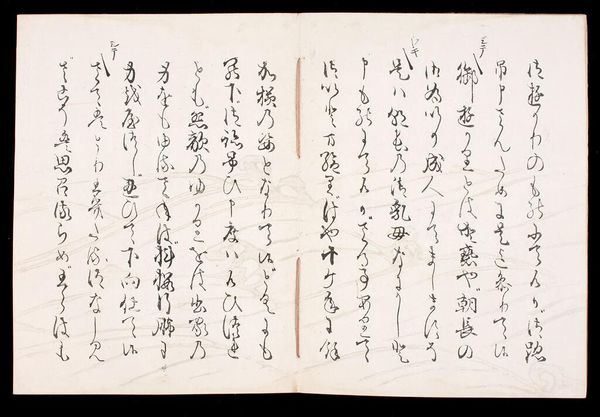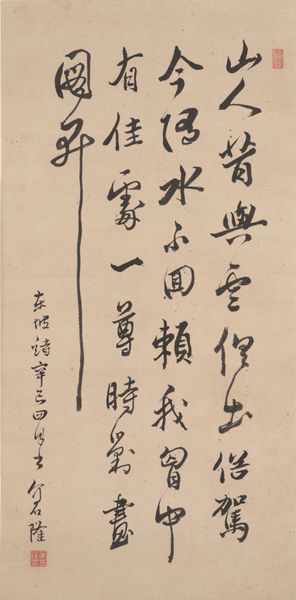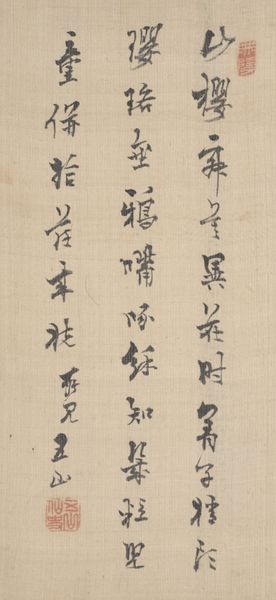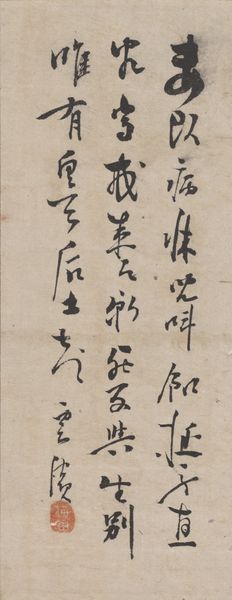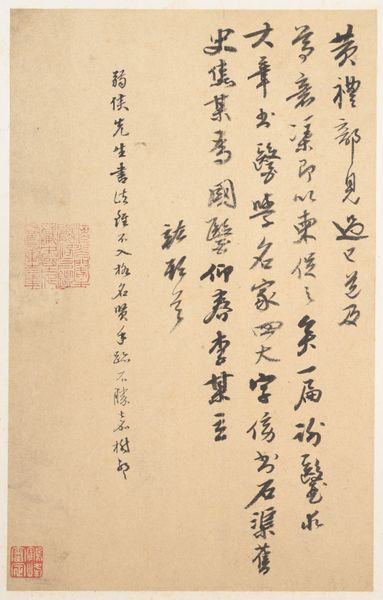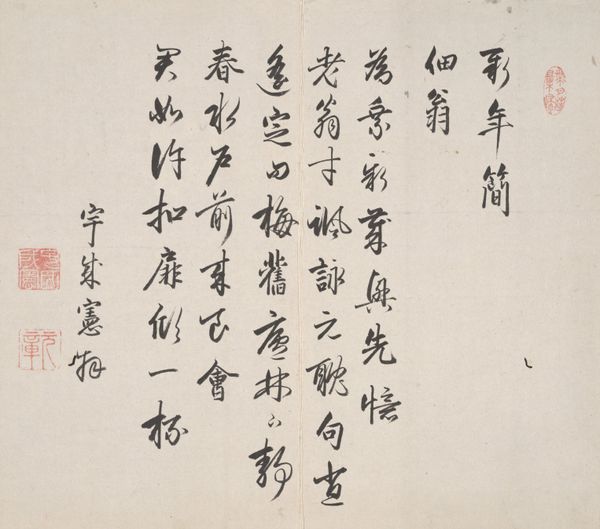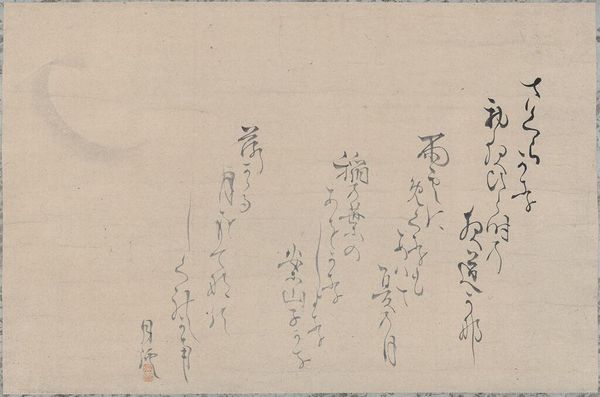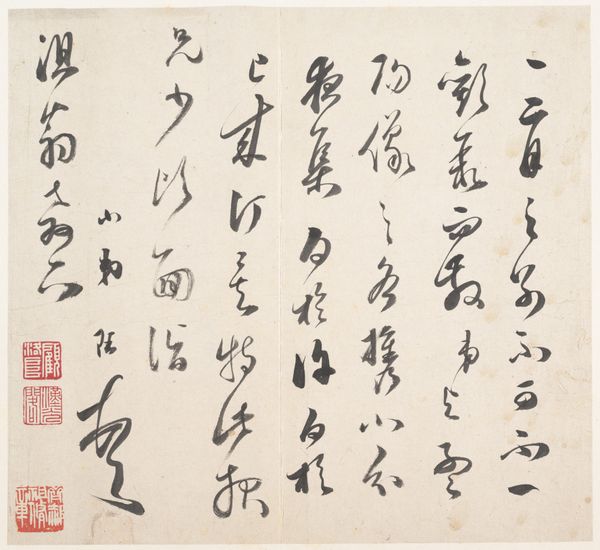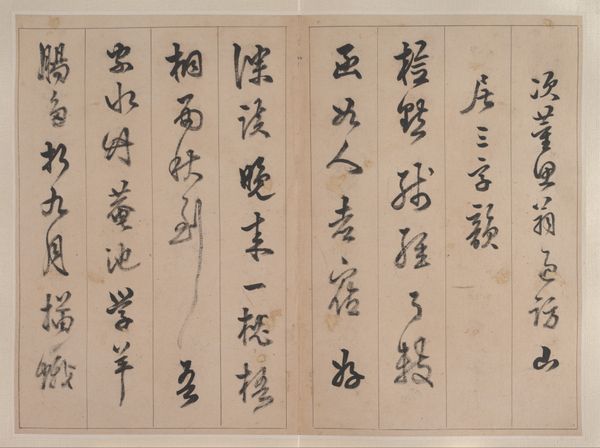
drawing, print, ink
#
drawing
# print
#
asian-art
#
ukiyo-e
#
ink
#
calligraphy
Dimensions: height 188 mm, width 505 mm
Copyright: Rijks Museum: Open Domain
This Japanese print, made by Katsushika Hokusai, probably with woodblock printing, features elegant calligraphic script. Hokusai was working in Japan during the Edo period, and his work reflects many of the social and artistic conventions of his time. Japanese calligraphy was not simply a form of writing but a highly respected art form. The ability to write beautifully and expressively was a sign of education and cultural refinement. The art of calligraphy was closely tied to Zen Buddhism, which emphasized meditation and mindfulness. Calligraphy was seen as a way to cultivate inner peace and express one's true nature. The meanings of the words themselves are also of social and historical interest. The script on this print seems to indicate a congratulatory message for a performance, which could have been religious or secular in nature. Further research into Edo-period performance traditions and the social role of calligraphy would help to illuminate this work more fully. The meaning of art is contingent on social and institutional context and can be discovered with the right research resources.
Comments
No comments
Be the first to comment and join the conversation on the ultimate creative platform.
